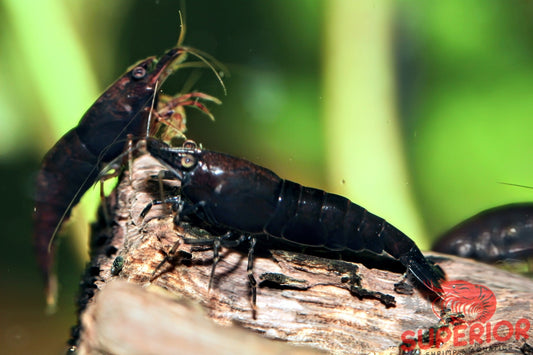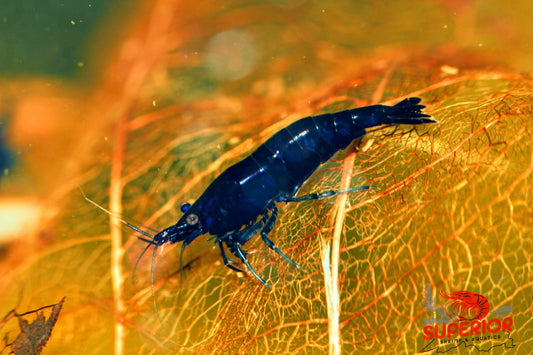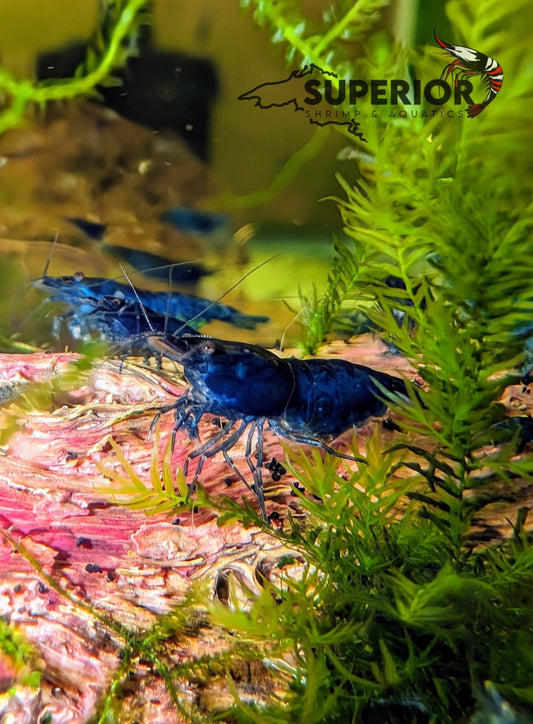Introduction: A pod with a purpose
Picture a seed head that once floated across a still pond in Asia, its honeycombed chambers releasing seeds into mud and silt. Months later, that same pod—dried, lightweight, and full of character—becomes part of your shrimp tank. A Lotus Pod isn’t just décor; it’s a functional botanical, a slow tannin source, and a ready-made micro-habitat that supports grazing, shelter, and naturalistic water chemistry.
The lotus has a long cultural history and an equally compelling ecological one. The structure that once held seeds above a wetland now becomes a miniature apartment complex for invertebrates in your aquascape. The continuity is elegant: what nature made to nurture seeds now nurtures biofilm and shrimplets.
Origins and natural ecology
The sacred lotus, Nelumbo nucifera, produces those familiar, perforated seed heads. Their woody walls and chambered architecture help the fruit resist decay on the stalk, survive transport, and, in famous cases, preserve viable seeds for astonishing spans of time—centuries in some archaeobotanical records. That durability translates directly to aquarium longevity: pods persist for months underwater before softening. (Cambridge University Press & Assessment, Czaja Precambrian Paleobiology Lab)
Structurally, the pod is a cellulose-and-lignin matrix; lignified tissues confer stiffness and slow microbial attack, which is why pods outlast softer leaf botanicals. This basic plant chemistry explains both their buoyancy when first added and their steady, gradual breakdown thereafter. Recent lotus research on lignin pathways continues to illuminate why these tissues are so resilient. (MDPI, ScienceDirect)
Why aquarists use lotus pods
In a shrimp or nano community aquarium, a lotus pod reliably does three jobs. It leaches tannins and other humic substances that gently nudge pH downward in low-buffer water; it hosts biofilm that shrimplets graze; and it creates shelter in the form of dozens of tiny bolt-holes. The end result is water that looks and behaves more like leaf-litter habitats that shrimp and small fishes evolved in, with calmer behavior and more natural foraging.
For a deeper shrimp-care context (feeding, molt safety, breeding), steer readers to your long-form Neocaridina guide and environment primer:
-
Neocaridina davidi comprehensive guide: https://www.superiorshrimpaquatics.com/blogs/news/neocaridina-davidi-a-comprehensive-guide-for-hobbyists-and-researchers (Superior Shrimp & Aquatics)
-
Creating the perfect Neocaridina environment: https://www.superiorshrimpaquatics.com/blogs/news/creating-the-perfect-environment-for-neocaridina-shrimp-tank-setup-water-parameters-care-guide (Superior Shrimp & Aquatics)
If you’re building a blackwater scape, pair pods with Almond Leaves and Casuarina Cones from your Botanicals Collection for layered tannin release and varied textures. (Superior Shrimp & Aquatics)
The structure of a pod, briefly
Each chamber is a tiny vestibule, large enough for shrimplets and microfauna, and the outer rims present rugged grazing surfaces for biofilm and filamentous algae. Because the walls are lignified, colonization happens on a slow-changing substrate: excellent for stable, long-term grazing stations rather than fast, messy decay.
Preparation methods (and what each one does)
There are three practical ways to add pods: drop-in, pre-soak, or boil. Each changes the tannin timing, mold risk, and initial buoyancy.
+------------------+----------------------+---------------------+------------------------+
| Method | Tannin Release Rate | Mold Risk | Typical Outcome |
+------------------+----------------------+---------------------+------------------------+
| Raw (drop-in) | Slow, steady | Moderate | Light tint, floats 1–3d|
| Pre-soak 24h | Moderate, even | Low | Sinks faster, mild tint|
| Boil 10–15 min | Front-loaded spike | Very low | Sinks immediately, tea |
+------------------+----------------------+---------------------+------------------------+
Seven-day release profile (qualitative):
Day → 1 2 3 4 5 6 7
Raw ▓▓
Soaked ▓▓▓▓
Boiled ▓▓▓▓▓▓▓
If a customer wants quick amber water and instant sinking, advise a short boil. If they prefer a gentler tint and slower chemistry changes, suggest a 24-hour soak in dechlorinated water, then place.
Chemistry and water effects
Pods are a gentle acidifier. In low-KH water they can register a small, steady pH drop; in buffered water the effect is more cosmetic than chemical. That’s the humic substances story: they weakly chelate metals, buffer toward mild acidity, and can modulate microbial communities. Multiple aquaculture studies (fish and shrimp) have explored humic/fulvic additions for stress relief and immune benefits; the direction of effect is consistent even if dosage and species vary. (PubMed Central, Frontiers, PubMed)
To compare with other botanicals on your site: Almond Leaves are faster, higher-surface-area tannin sources; Casuarina Cones are slower and spikier in geometry, great for nano scapes. Both pair well with pods for staggered release. Hobby literature also discusses mild antimicrobial activity of catappa extracts in ornamental fish contexts; the evidence base is mixed but promising. (ResearchGate)
Back-of-tank reference for customers (single pod in ~10 gal):
Days submerged 0 5 10 20 30
Tannin (ppm) 0 ~5 ~15 ~25 ~35+
pH impact (low KH) none -0.1 -0.2–0.3 ~-0.4 ~-0.5
When customers ask “will this crash my pH?” the practical answer is: not in a well-buffered tank; in very soft water, add slowly and observe.
Colonization and biofilm (why shrimp swarm the pod)
Within days a pale, edible fuzz appears on the inner walls and rims. That early “fuzz” is a fungal–bacterial biofilm that shrimp adore. Over weeks, algae filaments join, and the pod becomes a stable mixed-microbe buffet. In shrimp culture, biofilm can contribute substantially to nutrition; in some trials with penaeid shrimp, biofilm carbon and nitrogen contributions were large fractions of growth inputs. While species and systems differ from ornamental tanks, the principle carries. (ScienceDirect)
Colonization over eight weeks (schematic, % surface with grazeable film):
Week 1 2 3 4 6 8
Coverage 15% 35% 55% 70% 80% 85%
Texture fuzz fuzz fuzz+ mixed mature mature
+algae film film
If a buyer finds the film “unsightly,” reframe it as a feeding station. For display-only tanks, suggest moving the pod to a less conspicuous spot rather than removing the biology shrimp rely on.
Tankmates and placement (with natural interlinks)
Pods shine in shrimp colonies. For beginners and community tanks, point them to Neocaridina—hardier, more forgiving water needs. For advanced keepers who purposely run softer, lightly acidic water, Caridina are perfect candidates, including premium lines like Blue Bolt Shrimp (and, for enthusiasts, Extreme Blue Bolt Shrimp). (Superior Shrimp & Aquatics)
Place pods near wood or among stones from your Hardscape collection so water flow eddies and chemical cues linger, drawing shrimp and small fishes. If a customer is actively managing a nuisance-snail bloom around their scape, direct them to your Assassin Snail guide for a balanced, non-chemical approach that pairs well with botanicals:
Assassin Snail Care & Breeding Guide: https://www.superiorshrimpaquatics.com/blogs/news/assassin-snail-care-breeding-guide-habitat-diet-lifespan-tips (Superior Shrimp & Aquatics)
For controlled feeder populations or mixed clean-up crews, you can link them to your live Ramshorn Snails; they also browse biofilm on and around pods and make great demonstration animals for new keepers. (Superior Shrimp & Aquatics)
Maintenance and longevity
Expect three broad phases. First, the tannin phase (weeks 1–4) when water takes on a warm tea color and shrimplets begin using the chambers as hideaways. Second, the grazing-station phase (weeks 3–10) with robust biofilm and algae filaments on inner walls. Third, the softening phase (months 3–6) where the rim gives a little to the touch and pieces may chip. When structure collapses, replace or let fragments contribute to the detrital layer.
If a customer wants the tint without the wait, boiling is a legitimate technique, though it front-loads the release. If they want minimal tint, recommend a soak and change-water approach.
Troubleshooting (fast answers customers actually use)
White fluff on day 3 is normal biofilm; it is edible and temporary. If they dislike the look, reposition the pod rather than scrubbing it clean.
Floating means it’s still buoyant; either weigh it with wood/stone or pre-boil.
“Water got too brown” can be solved by removing the pod and running carbon or doing a large water change.
pH dipped in very soft water? Add more frequent water changes, raise KH slightly, or reduce pod count. For a general water-parameter refresher, send them to your Neocaridina environment guide (above). (Superior Shrimp & Aquatics)
Ethics and sourcing
Dried lotus pods are a byproduct of lotus cultivation. Buying pods from trusted vendors ensures clean, pesticide-free material and supports small agricultural supply chains. This is a core brand promise you can reiterate on the product page. Stock the customer’s cart with a clean set of scaping pieces right next to the pods via Botanicals and Hardscape so they can build a complete habitat, not just add a single ornament. (Superior Shrimp & Aquatics)
Shop the exact items mentioned (internal links)
-
Lotus Pods: https://www.superiorshrimpaquatics.com/products/lotus-pod
-
Almond Leaves: https://www.superiorshrimpaquatics.com/products/almond-leaves (Superior Shrimp & Aquatics)
-
Casuarina Cones: https://www.superiorshrimpaquatics.com/products/casuarina-cones (Superior Shrimp & Aquatics)
-
Botanicals Collection: https://www.superiorshrimpaquatics.com/collections/botanicals-parent (Superior Shrimp & Aquatics)
-
Hardscape (Parent): https://www.superiorshrimpaquatics.com/collections/hardscape-parent (Superior Shrimp & Aquatics)
-
Neocaridina Shrimp: https://www.superiorshrimpaquatics.com/collections/neocaridina-shrimp-parent
-
Caridina Shrimp: https://www.superiorshrimpaquatics.com/collections/caridina-shrimp-parent (Superior Shrimp & Aquatics)
-
Blue Bolt Shrimp: https://www.superiorshrimpaquatics.com/products/blue-bolt-shrimp (Superior Shrimp & Aquatics)
-
Extreme Blue Bolt Shrimp: https://www.superiorshrimpaquatics.com/products/extreme-blue-bolt-shrimp (Superior Shrimp & Aquatics)
-
Ramshorn Snail: https://www.superiorshrimpaquatics.com/products/ramshorn-snail (Superior Shrimp & Aquatics)
-
Freshwater Snails (collection): https://www.superiorshrimpaquatics.com/collections/freshwater-snails-parent (Superior Shrimp & Aquatics)
-
Assassin Snail Guide: https://www.superiorshrimpaquatics.com/blogs/news/assassin-snail-care-breeding-guide-habitat-diet-lifespan-tips (Superior Shrimp & Aquatics)
-
Neocaridina Comprehensive Guide: https://www.superiorshrimpaquatics.com/blogs/news/neocaridina-davidi-a-comprehensive-guide-for-hobbyists-and-researchers (Superior Shrimp & Aquatics)
Footnotes & Sources (URLs included)
[1] Shen-Miller, J. (2002). Sacred lotus, the long-living fruits of China Antique. Seed Science Research. (Seed viability ~1300 years.)
https://www.cambridge.org/core/journals/seed-science-research/article/sacred-lotus-the-longliving-fruits-of-china-antique/950DD5CB3E32BA6D99A79CAB5D75B038 (Cambridge University Press & Assessment)
[2] Cheng, L. et al. (2022). Lignin synthesis in lotus. International Journal of Molecular Sciences. (Why lotus tissues are mechanically resilient.)
https://www.mdpi.com/1422-0067/23/4/2250 (MDPI)
[3] Zhao, S. et al. (2024). NnHCT1 and lignin enhancement in lotus. Carbohydrate Polymers. (Gene function related to lignin; structural durability context.)
https://www.sciencedirect.com/science/article/abs/pii/S0141813024041965 (ScienceDirect)
[4] Shen-Miller, J. et al. (2013). Centuries-old viable lotus seeds. (PDF with radiocarbon-dated ~1300-year seed germination.)
https://www.andyczaja.com/uploads/5/2/9/2/52922717/shen-miller_etal_2013_tpb.pdf (Czaja Precambrian Paleobiology Lab)
[5] Mungkung, R. et al. (2023). Humic acids and early fish development. Animals. (Open-access review noting hardness/pH interactions of humic acids.)
https://pmc.ncbi.nlm.nih.gov/articles/PMC10223718/ (PubMed Central)
[6] Lieke, T. et al. (2021). Phenol-rich fulvic acid reduces stress, boosts immunity. Scientific Reports.
https://pmc.ncbi.nlm.nih.gov/articles/PMC8388438/ (PubMed Central)
[7] Frontiers (2022). Sodium humate improves growth & immunity in shrimp aquaculture.
https://www.frontiersin.org/journals/marine-science/articles/10.3389/fmars.2022.989325/full (Frontiers)
[8] Abreu, P. C. et al. (2007). Importance of biofilm as a food source for shrimp. Journal of Experimental Marine Biology and Ecology.
https://www.sciencedirect.com/science/article/abs/pii/S0022098107001761 (ScienceDirect)
[9] Thompson, F. L. et al. (2002). Biofilm for water quality and nourishment in aquaculture. Aquaculture.
https://www.sciencedirect.com/science/article/abs/pii/S0044848601006421 (ScienceDirect)
[10] Catappa/almond leaves in ornamental aquaria—antimicrobial context (study abstract).
https://www.researchgate.net/publication/238103693_The_in_vitro_Antibacterial_Activity_and_Ornamental_Fish_Toxicity_of_the_Water_Extract_of_Indian_Almond_Leaves_Terminalia_catappa_Linn (ResearchGate)





